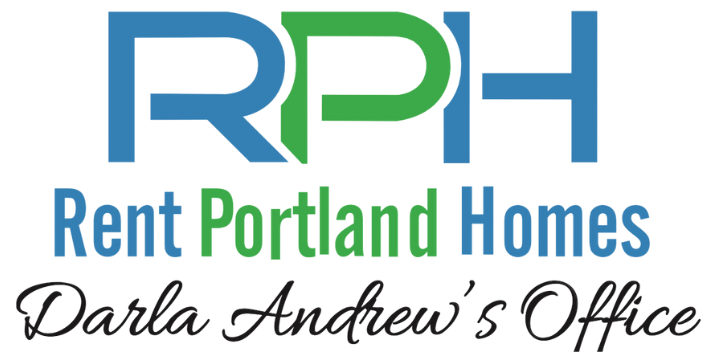The most necessary winter tree trimming has nothing to do with tinsel or ornaments. The leaves have long since fallen from our deciduous trees outside, and as we move deeper into winter, the chances of a severe winter storm are only getting higher. By now, most landlords should have completed all essential winter maintenance to keep their rental homes in good shape through the colder months. But if there’s one thing people tend to leave until the last minute, it’s taking time to trim their trees.
It makes sense: trimming overgrown or potentially hazardous tree branches can be difficult, expensive, and even dangerous. So what’s the best way to properly trim your trees before the next winter storm blows through our area?
Overgrown Trees Are Dangerous
We all remember the ice storm from last February, and it no doubt stuck especially hard in the minds of local property owners. The storm plowed across the United States, causing $21 billion in property damage nationwide, and it hit our home state of Oregon hard. President Joe Biden declared the storm a major disaster and directed FEMA to provide federal disaster relief to aid in the recovery process. In Oregon, that single storm cost nearly $30 million in damage, and the cost of removing debris – largely fallen trees and limbs – accounted for $19 million of that amount.
And even before the ice storm, our area also witnessed record-breaking winds earlier that fall. That historic wind storm saw massive power outages for 20,000 customers across Oregon. Tree branches close to power lines are often the cause of downed power lines during adverse weather events. So how do you keep your property protected?
It’s clear that unpruned trees can wreak serious havoc when wintery weather hits. So here are the best ways to trim your trees and keep your rental safe from damage this winter.
How to Properly Trim Your Trees
When To Get Started
It’s always a good time to trim your property’s greenery. Trimming in fall and early winter can help prevent any damage from falling limbs, but pruning in late winter tends to be healthier for trees as they’re deep in their dormant period. As leaves drop in the cooler months, they reveal the branches underneath. This makes it easier to see which branches are a potential threat to roofs and power lines and to access them when it’s time to prune. The most important thing is to make sure to take care of all your tree-trimming needs before the first big winter storm comes through. Since lousy weather can start at any time, it’s best not to delay!
The Right Tools for the Job
DIY landlords might rather tackle the big job of trimming trees themselves rather than hiring a landscaper. To begin with, you’ll need a ladder, some hand pruners, loppers, and a pole-pruner for hard-to-reach branches. For larger branches, you’ll probably need a chain saw – but you also might want to consider hiring a professional due to safety concerns.
Look for Hazardous Branches
Once you’ve assembled your tools, the next step is to do a thorough inspection of the trees on your property to determine what needs a trim. Be especially on the lookout for dead or unhealthy branches that could break and fall during a storm. Also, keep an eye out for any branches leaning over a rooftop or power line, as these will need trimming as well.
Start Small
Begin with trimming smaller branches with your hand tools. Cut limbs a quarter inch above a bud that faces the outside of the plant to encourage new growth in that direction. Cutting at a 45-degree angle helps prevent water damage and disease.
Tackle Larger Branches Carefully
Remember that bringing down a tree limb yourself doesn’t necessarily mean it won’t cause damage. Improper pruning of large limbs can still fall and cause injury or property damage, so it’s essential to be extra careful. Also keep in mind that removing a large tree branch can open your tree up to disease if you’re not careful.
The best place to cut a larger limb is 18 inches up the branch. Start by cutting halfway through the branch from the underside, then move to the top of the branch and cut downwards until it breaks free. Once the tree limb is free, find the branch collar – a place below the cut where the bark is rougher and swollen–and make your final cut here at a 45-degree angle.
Tree Pruning is a Tough Job
Well-pruned trees are not only safer for your tenants and property, they also look great and are more robust and healthier in the long term. But no matter how hands-on you are with your property, tree trimming can be a challenging task for even the most experienced landlord. A bad trimming job can have all sorts of unintended consequences, from damage and injury to a diseased and dying tree. If your property’s trees need trimming but you’re not sure you want to take on the job yourself, it’s always best to call in a professional. But with so many options in the Portland area, how do you know which company you can trust?
Consult with the Professionals
Rent Portland Homes by Darla Andrew takes all the guesswork out of finding a good maintenance contractor. We work with several trusted vendors to ensure that all of our properties’ maintenance needs are handled quickly, safely, and for a fair price. We know how stressful dealing with even routine repairs and maintenance can be, let alone when winter throws a storm-shaped wrench into the works.
When managing your own property, it’s all-too-common to have to call a half-dozen different contractors or more, trying to work multiple quotes in between your busy schedule and theirs. When you work with us, we make sure that all your rental’s needs are taken care of with no action on your part. You can sit back this winter knowing that your property’s tree-trimming needs are already taken care of and that you’re getting the best service for the best price all at once.
Rather than worrying about all the havoc a falling branch can wreak, we invite you to stay warm and dry inside this winter while our professional contractors handle all the most stressful details of tree trimming. If you give us a call or text at (503) 515-3170 or reach us through our website, we’d love to talk to you more about the benefits of working with Portland’s premier property management company.


Recent Comments